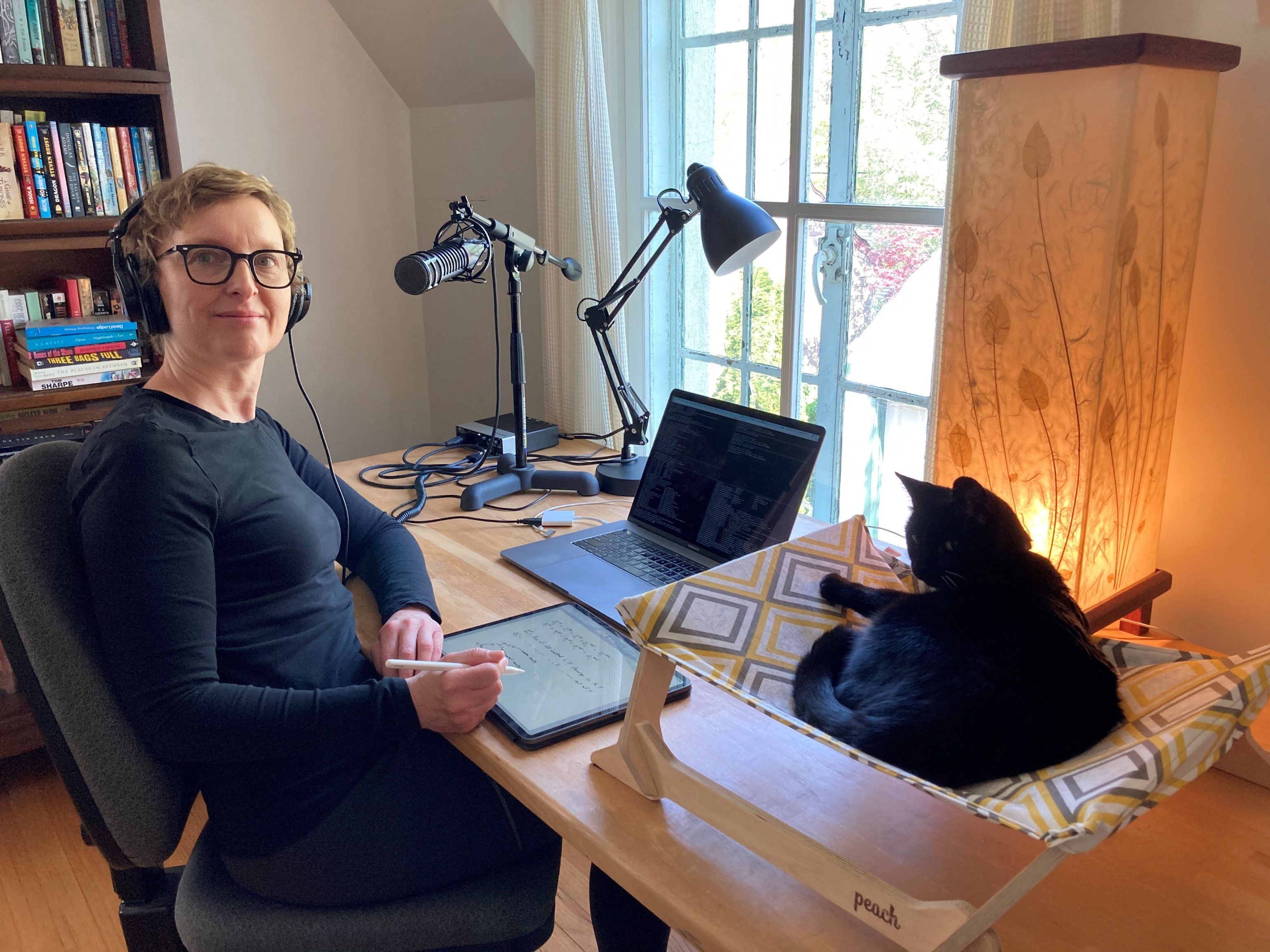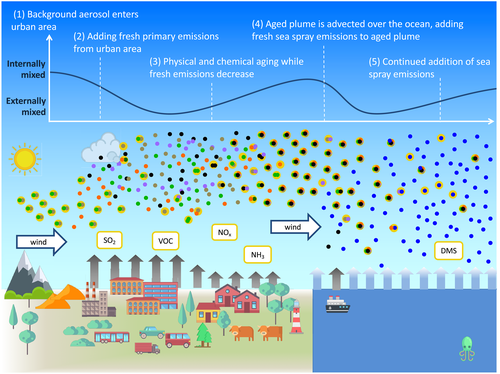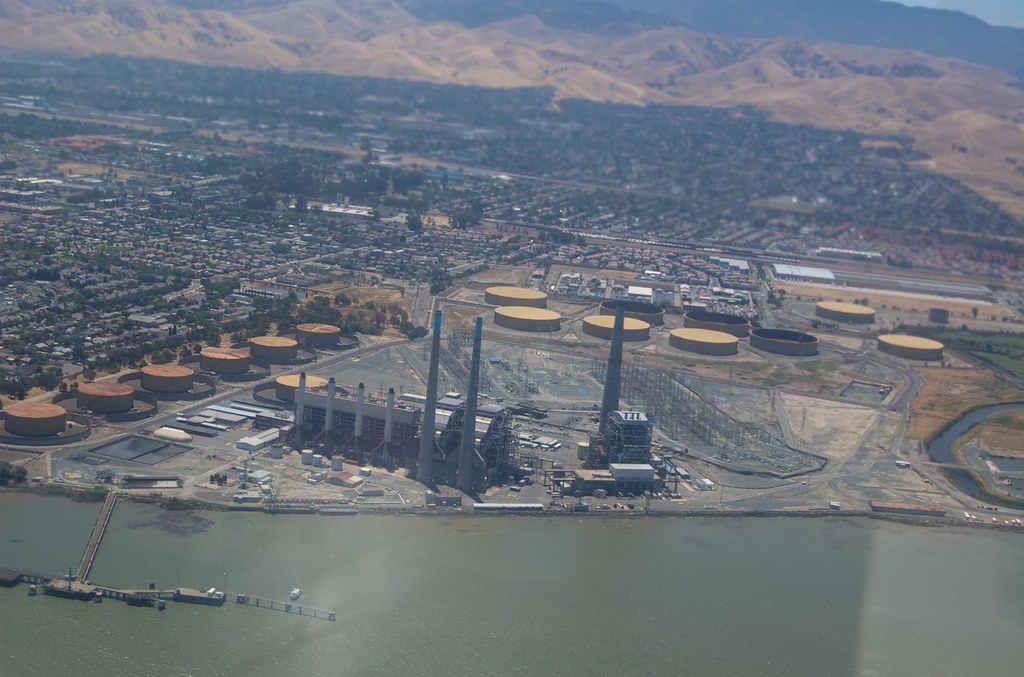
One modeler digs into the complexities of how atmospheric particles form, grow, move, and change
Nicole Riemer, a professor at the University of Illinois at Urbana-Champaign, studies the growth, transformations, and transport of aerosols.
These airborne microscopic particles heavily influence climate. They are solids and liquids that originate, in part, as dust, pollen, sea spray, and other natural materials. Aerosols are also the product of wildfires, industry, and transportation. They cool or warm the planet by reflecting or absorbing sunlight and by changing the brightness of clouds.
Aerosols also affect visibility as one part of processes that drape megacities in blankets of chemically complex pollution.
“And they can be bad for health,” says Riemer. In their tiniest forms, aerosols can penetrate deep into mammalian lungs.
“I love simulating how aerosols behave in the atmosphere,” she says of her studies. “The complexities of aerosol dynamics are endlessly fascinating.”
A Motivating Question
Riemer’s research investigates how aerosols act in the atmosphere. She asks: How do aerosols influence weather and climate? How are they best represented in computer models?
More than a decade ago, those core questions led her to the Atmospheric System Research (ASR) program at the U.S. Department of Energy (DOE). It funds research on fundamental climate processes, along with improved simulations of earth systems.
So far, Riemer has been part of four ASR projects. At the heart of it all is how to model the astonishing complexity of atmospheric aerosols. Modelers have a lot to cope with: “number concentration,” the number of particles per volume of air. Different chemical species. Different aerosol sizes and shapes. And the complicated evolution of particles in the atmosphere.
“How to do this properly has been a question that has motivated me throughout my career,” says Riemer.
Her work also adds another layer of difficulty: how to account for individual particles, which are as distinct as snowflakes.
Models in the Middle

“Experimentalists study one process in great detail in their laboratories,” says Riemer. “To explore many processes simultaneously, we really need models. We need a framework to tease out what matters and what doesn’t.”
In her ASR projects, Riemer set out to develop a model that would reflect the daunting diversity of individual particles. She paired with her husband, Matthew West, an applied mathematician and associate professor at Illinois.
To simulate atmospheric aerosols, Riemer and West developed the Particle-resolved Monte Carlo code (PartMC), then combined it with the Model for Simulating Aerosol Interactions and Chemistry (MOSAIC), developed by Rahul Zaveri at Pacific Northwest National Laboratory. Their work represents a big step towards not only representing individual particles in the atmosphere, but how those particles age, which is “something our model does really well,” she says.
The aging―natural evolution―of aerosols means, among other things, that after some time in the atmosphere, particles absorb and reflect solar energy differently than during the earlier stages in their life cycle.
“This is the latest thing we are trying to do―dealing with shapes better,” says Riemer. “The question is: How do you incorporate that into models?”
Part of their ASR work, as outlined in a 2013 paper, involved Riemer and West creating the first quantitative metric for aerosol population mixing state.
“Once you put a number on mixing state,” she says, “it’s much easier to study quantitatively.”
Aerosol mixing state means that aerosol particles are made of many chemical species; that they exist in many different shapes; and that particles of different compositions are assembled into a population. Mixing state has an impact on how aerosols influence clouds and climate.
A review of ways to model and measure mixing state is the subject of a 2019 paper in Reviews of Geophysics, which Riemer led.
“I am very proud of it,” she says.
‘These Crazy Shapes’
The Riemer-West 2018-2021 ASR project, “Multiscale Aerosol Modeling Across Space and Composition,” adds the modeling complication of aerosol shape.
Aerosols undergo morphological change as they age, and the result, says Riemer, is “all these crazy shapes.”
The latest Riemer-West project uses a model they pioneered―15 years in the making―to simulate aerosols down to the level of individual particles. The work also relies on particle measurements from field campaigns sponsored by DOE’s Atmospheric Radiation Measurement (ARM) user facility.
Riemer uses a lot of data from ARM’s 2010 Carbonaceous Aerosol and Radiative Effects Study (CARES).
The project also employs machine learning, which makes it easier to move from detailed process modeling to simulations of the climate in large-scale models.
Improving models “is always the struggle,” says Riemer, “but we are making progress.”

Black Forest Lessons
Riemer grew up in Waldbronn, a village in southwestern Germany at the edge of the Black Forest.
In the 1980s, when Riemer was in high school, acid rain was destroying this forest landscape. By 1984, half of Black Forest trees showed signs of what Germans call “Waldsterben,” or forest dieback.
Riemer, who had grown up with an urge to “to explain the world around me,” is the daughter of a carpenter and a housewife. Drawn to physics, she became a first-generation university student who saw meteorology as “physics applied to the atmosphere. Add in chemistry and biology and you get this interdisciplinarity that really appealed to me.”
Ozone to Aerosols
In 1991, Riemer enrolled in the meteorology program at the University of Karlsruhe, just 20 kilometers (12 miles) away from Waldbronn. By 1997, she had earned a Diploma of Meteorology (the equivalent of a combined bachelor’s and master’s degree), and by 2002, a PhD.
Her master’s thesis modeled the precursor gases linked to ozone, which contributes to smog.
“That meant I really needed to look into the entire system of trace gases in the atmosphere,” says Riemer.
The work brought her to aerosols, whose formation processes by the 1990s were just starting to appear in models.
The shift in emphasis went beyond gas-phase chemistry and “was new for all of us,” says Riemer. She praises her mentors at Karlsruhe, husband-and-wife scientists Bernhard and Heike Vogel, who shared in the academic risk.
“Gases are simple to describe in a model: one number per gas and how a gas changes over time,” she says. “Things get quite a bit more complicated when you add in aerosols.”
For her doctoral dissertation, Riemer took the chemical-constituents model she used for her master’s degree and added an aerosols component. Her focus was black carbon, an atmospheric particle type “really interesting for its climate impact,” she says.
“Composition really changes as the particles go about their lives in the atmosphere,” says Riemer, and black carbon is a good case study that she still writes about. “Black carbon will always be an interest, but my research now is really about the mixture of things.”
Caltech Interlude

Between her master’s and PhD work, Riemer spent six months as a German National Academic Foundation Scholar studying gas-phase chemistry at the California Institute of Technology (Caltech). She says atmospheric chemist John Seinfeld agreed to the stay, despite her being “an unknown master’s student from some far-away place.”
Since then, Riemer has carried the lesson of Seinfeld’s generosity into her own career as a mentor open to new students. “I know how important an experience like that can be.”
As a Caltech-interlude bonus, Riemer met West, who remains “my favorite collaborator on any project.”
Along the road to Illinois, where she landed in 2008, Riemer spent time as a postdoctoral scholar at the University of California, Davis; Stanford University; and the NASA Ames Center for Turbulence Research. From 2005 to 2007, she was an assistant professor at Stony Brook University in New York.
The ASR Thread
ASR runs like a thread through the last decade of Riemer’s career. She is co-chair of ASR’s Aerosol Processes working group, which tracks developments and emerging needs related to aerosol research on chemical, optical, and microphysical matters.
The group is busy planning for the 2020 Joint ARM User Facility/ASR Principal Investigators Meeting from June 23 to 26.
Among the big issues, says Riemer, is the direction of aerosol investigations during the TRacking Aerosol Convection interactions ExpeRiment (TRACER), a Houston-area ARM field campaign beginning in 2021.
Another big issue, she says, are secondary organic aerosols, which are formed from organic species and a challenge to represent in models.
Life After Hours
“I love living in a Midwest college town,” says Riemer. She and West share a 1930s-era frame house flanked by big trees in Urbana-Champaign, a few hours south of Chicago.
Traveling there, she says, “I get to experience a big city―then come happily back to a small city.”
Riemer runs, bikes, swims, and does yoga. She also reads murder mysteries set in England of the 1930s and the Victorian era.
Offering a near-scientific, black-carbon excuse for her reading, Riemer says: “The air pollution in London was pretty bad around that time.”
# # #This work was supported by the U.S. Department of Energy’s Office of Science, through the Biological and Environmental Research program as part of the Atmospheric System Research program.

